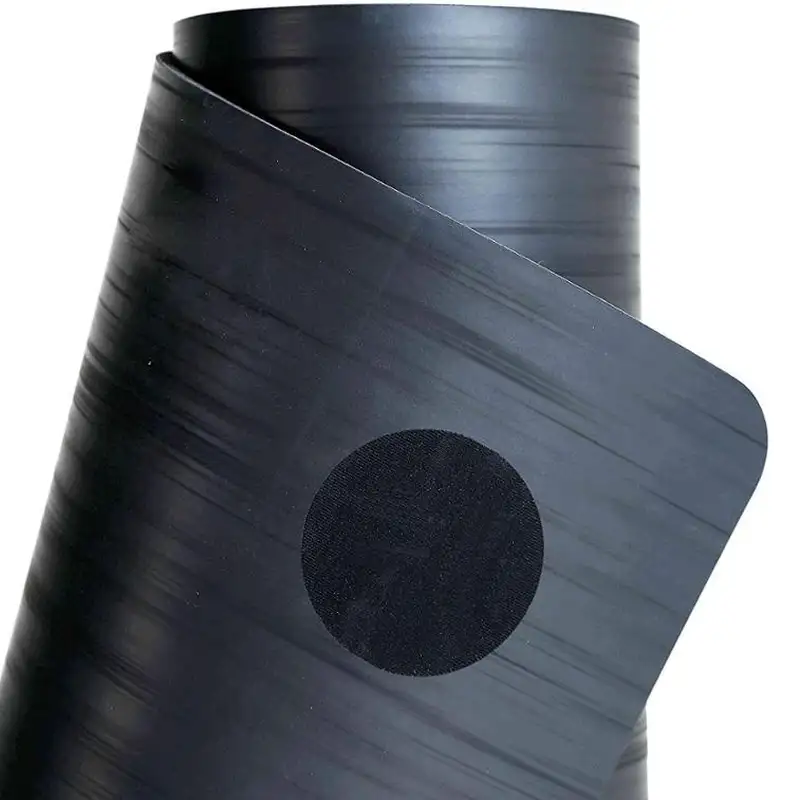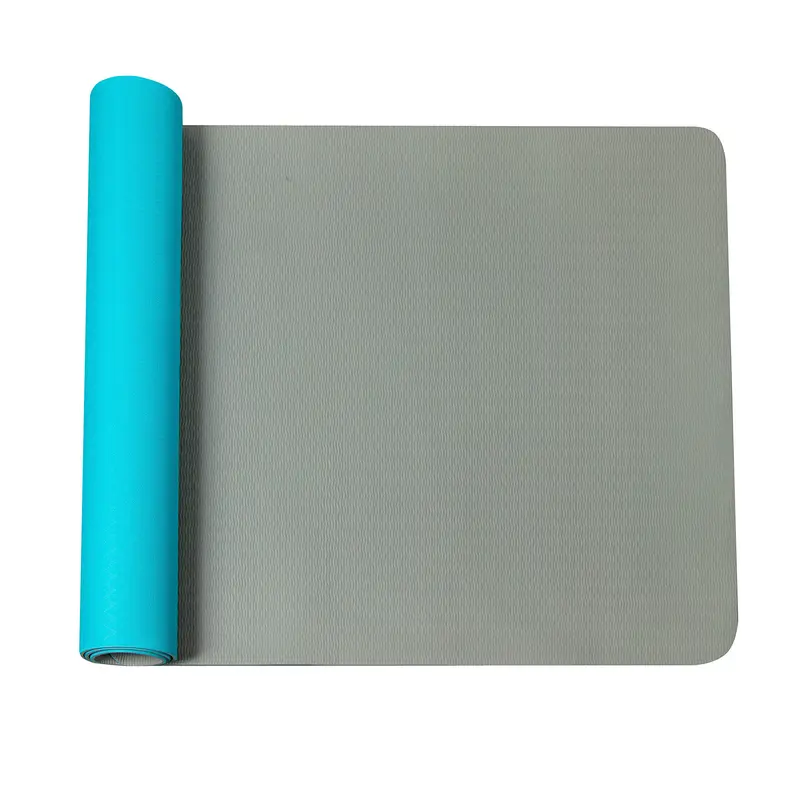1. PVC (Polyvinyl Chloride):
- Pros:
- Durable and provides good grip.
- Affordable and widely available.
- Easy to clean and maintain.
- Cons:
- Not environmentally friendly; it’s not biodegradable and involves harmful chemicals in production.
- Might not offer the best traction, especially when sweating.
2. TPE (Thermoplastic Elastomer):
- Pros:
- More eco-friendly than PVC, typically recyclable and biodegradable.
- Provides good traction and is lightweight.
- Generally hypoallergenic.
- Cons:
- May not be as durable as PVC.
- Some varieties might have a rubber-like odor.
3. Natural Rubber:
- Pros:
- Excellent grip and traction, even when wet.
- More environmentally friendly than PVC, as it’s biodegradable and made from sustainable materials.
- Offers good cushioning for joints.
- Cons:
- Not suitable for individuals with latex allergies.
- Can have a strong rubber smell initially.
4. Cork:
- Pros:
- Eco-friendly and biodegradable.
- Naturally antimicrobial and provides good grip, especially when moist.
- Offers a unique texture and comfortable surface.
- Cons:
- Requires more maintenance and regular cleaning.
- Can be heavier than other materials.
5. Jute:
- Pros:
- Made from natural fibers, making it biodegradable and eco-friendly.
- Provides good grip and traction.
- Has a natural, earthy appearance.
- Cons:
- May feel rough to some practitioners.
- Absorbs moisture and might require more frequent cleaning.
6. Cotton or Organic Cotton:
- Pros:
- Breathable, soft, and comfortable for gentle yoga practices.
- Biodegradable and eco-friendly.
- Usually hypoallergenic.
- Cons:
- Offers minimal cushioning and less support compared to other materials.
- Might lack grip, especially when sweaty.
7. Microfiber Towels (for Hot Yoga):
- Pros:
- Designed for hot yoga to absorb sweat and provide a grippy surface.
- Can be placed over a standard mat for added traction.
- Machine washable and quick-drying.
- Cons:
- May require frequent washing if used as a standalone mat.
- Might not offer enough cushioning for some practitioners.
When choosing a yoga mat material, consider your priorities, such as grip, eco-friendliness, durability, and how the material feels against your skin, to ensure a comfortable and supportive practice.


